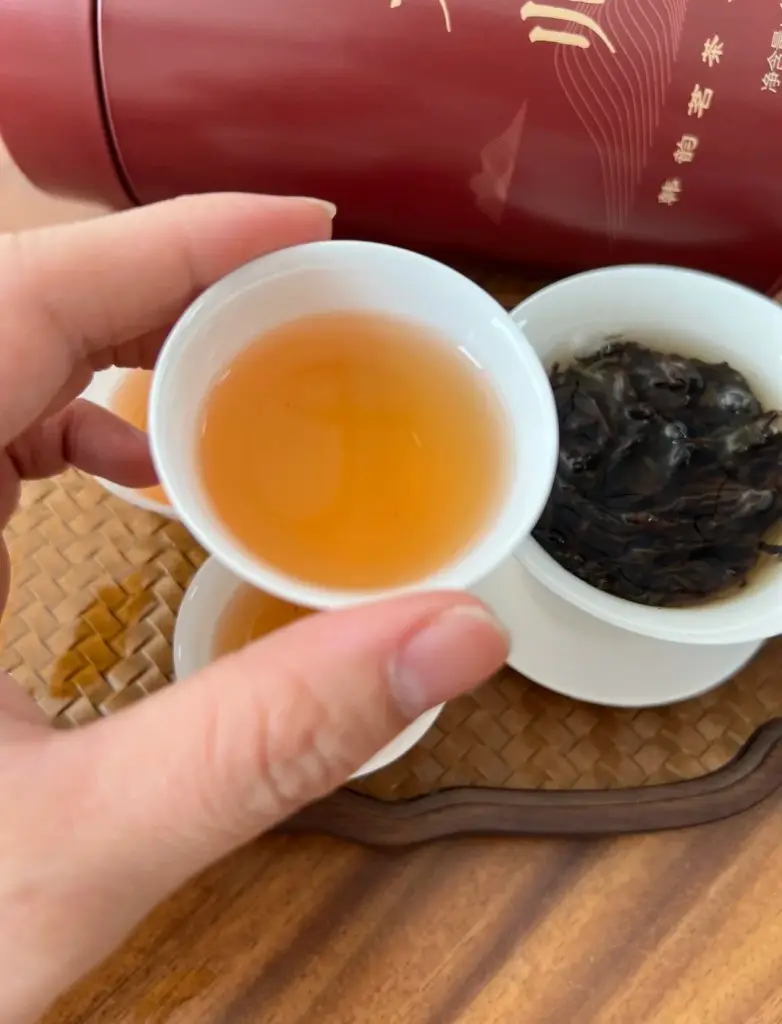If you’ve ever wondered, “What does oolong tea taste like?” you’re not alone. Oolong sits right between green and black tea in the tea universe, offering a flavor adventure that’s anything but boring. Let’s break down its taste, types, and tips to find your perfect cup—no fancy jargon, just real talk.
Oolong Tea 101: The Flavor Vibe
Imagine biting into a ripe peach while sniffing a bouquet of flowers… with a hint of toasted caramel in the background. That’s oolong tea in a nutshell—complex, layered, and full of surprises.
Here’s why it’s so unique:
Semi-oxidized magic: Oolong’s leaves are partially fermented (10%-70%), giving it a middle-ground vibe—lighter than black tea but bolder than green tea.
Flavor range: From floral and fruity to nutty and smoky, oolong’s taste depends on how it’s grown and processed.
The Taste Spectrum: Light to Bold Oolongs
Not all oolongs taste the same! Think of them like wine—terroir and processing change everything.
1. Light & Floral Oolongs
Examples: Taiwanese High Mountain Oolong, Baozhong
Taste: Crisp, sweet, and garden-fresh. Picture jasmine blossoms or dewy green apples.
Best for: Green tea lovers wanting more depth.
2. Fruity & Balanced Oolongs
Examples: Tieguanyin (Iron Goddess), Phoenix Dan Cong
Taste: Juicy apricot, honey, or roasted nectarines. Smooth with a buttery finish.
Fun fact: Some Phoenix Dan Cong oolongs have wild names like “Duck Poop Aroma” (yes, really!) but taste like tropical flowers.
3. Rich & Toasty Oolongs
Examples: Da Hong Pao (Big Red Robe), Charcoal-Roasted Tieguanyin
Taste: Think warm caramel, roasted almonds, or dark chocolate. These are the “cozy sweater” of teas.
Pro tip: Perfect for rainy days or post-meal sipping.
Why Does Oolong Taste So Different? 3 Key Factors
1. Oxidation Level = Flavor Intensity
Light oxidation (10%-30%): Bright and floral, like a crisp green apple.
Medium oxidation (30%-60%): Think ripe peaches or orchids dipped in honey.
Heavy oxidation (60%-70%): Deep, roasted flavors—imagine burnt sugar or aged wine.
2. Terroir Matters: Taiwan vs. China
Taiwanese oolongs: Grown in misty mountains, they’re creamy and sweet, like milk oolong’s vanilla-like vibe.
Chinese oolongs: Fujian’s rock oolongs (e.g., Da Hong Pao) have a mineral “rock rhyme,” while Anxi’s Tieguanyin screams orchids and butter.
3. The Roast Factor
Lightly roasted oolongs keep their natural花香 (flower aroma), while heavy roasting adds campfire warmth. Some masters roast leaves over charcoal for days—smoky but never bitter!
Oolong vs. Other Teas: Quick Comparison
Green tea: Oolong is less “grassy” and more rounded.
Black tea: Oolong skips the maltiness for fruity/floral notes.
White tea: Oolong has bolder flavors; white tea is subtler.
How to Brew Oolong for Best Flavor
Don’t ruin your tea! Follow these hacks:
Water temp: 85°C–95°C (185°F–205°F). Boiling water kills delicate aromas.
Steep time: Start with 30 seconds for light oolongs, 1 minute for roasted ones.
Re-steep!: Good oolong can brew 5–7 times. Flavor evolves—first cup is floral, third cup might be fruity!
“Will I Like Oolong?” Try These Beginner Picks
New to tea?: Start with Jin Xuan Milk Oolong (creamy, no actual milk!).
Sweet tooth?: Oriental Beauty tastes like honey and peaches.
Coffee convert?: Da Hong Pao’s roasted depth will hook you.
Myth Busting: Oolong Truths
Myth: “All oolong is bitter.”
Truth: Properly brewed, it’s smooth with a sweet aftertaste (called hui gan).Myth: “It’s just a weight-loss tea.”
Truth: Sure, it aids metabolism, but its real superpower is flavor.
Final Sip: Why Oolong Rocks
Oolong is the chameleon of teas—it can taste like a tropical vacation or a cozy night in, depending on the type. Whether you’re into floral highs, fruity mids, or toasty lows, there’s an oolong with your name on it.
Ready to explore? Grab a sampler pack, play with brewing times, and let your taste buds travel. Cheers to your next cuppa!


Add comment
You must be logged in to post a comment.